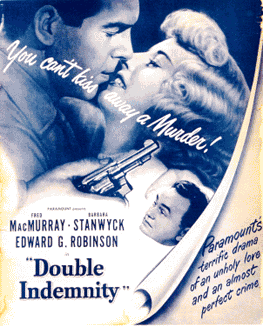Keith
Campbell
Mr.
Toth
English
101
May 21, 2013
Presentation Outline
·
Intro
o
The Matrix is the movie I have
chosen to highlight as neo-noir. In the far flung future of the 23rd
century, mankind war daily with brutal machines gifted, by humans, with
Artificial Intelligence. The one hope of
the humans lies in a prophecy. Will The
One of the prophecy be found in time to save humanity from their own creations?
·
Characteristics
of The Matrix that link it to Classic
Noir
o
Characters
§ Ambiguous
Protagonists
·
Thomas
Anderson
o
Thomas
is just trying to fit into the world around him while continually being pulled
to the wrong side of the line by Neo and Trinity. Thomas is a programmer for a respectable
software company.
·
Neo
o
Neo’s
actions get Thomas into trouble. Neo is
a criminal computer hacker who makes illegal programs and sells them on the
black market.
§ Femme Fatale
·
Trinity
o
Leads
Thomas to his death to bring Neo fully to life.
She tempts Neo with knowledge of finding Morpheus and the truth about
the Matrix.
§ Detective
·
Morpheus
o
Morpheus
is searching for the prophesized “The One”.
He is the Captain of a hover-ship and a leader in the human resistance.
·
Neo
o
Neo
is questing for Morpheus and the truth about the Matrix.
§ Antagonist
·
Agent
Smith
o
Opposes
the human resistance. An apparent
government agent, though in reality is a sentient enforcer program within the
Matrix for the machines.
o
Scenery
and Lighting
§ Convoluted
cityscapes
·
Show
“Road” Picture
o
The
camera cuts to a view of the road - a seemingly endless path shrouded in shadow
and rain leading deeper into the heart of a maze-like city.
§ Shadows
·
Show
“Alley” Picture
o
Notice
the shadow of Agent Smith preceding him into the alley. The scene shows Trinity on a fire escape
above the alley, trapped.
§ Rain
·
Show
“Bridge” Picture
o
Neo
waiting for Trinity under a bridge in the rain.
The rain adds to the depressive atmosphere.
·
Elements
of Neo-Noir
o
Current
Societal Tensions
§ Fear concerning creating
a possible contender species
·
Will
the AI be benign or will they be serious competitors with mankind?
§ The Establishment
versus The General Public
·
The
illusion of control for the public
o
Everyone
believes that they in control of their lives
o
In
reality the machines control everything
o
Allusion
to anxieties of the public concerning government control
§ Religious Anxieties
·
Does
Neo represent Jesus?
·
Question
of belief
o
Is
belief a requirement for the Messiah to be real?



